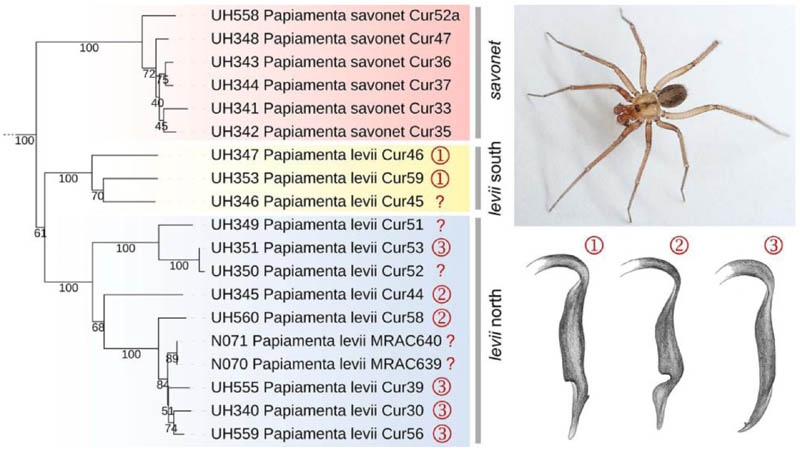This paper
builds on a large recent collection of the Ninetinae genus Papiamenta
from Curaçao.
We combine morphology with CO1 sequences, SEM and TEM data, and
karyotyping to analyze this geographically isolated and poorly known
island genus. Genetic (CO1) distances between the two morphologically
very distinct species on Curaçao (P. levii, P. savonet) are surprisingly low
(7.4–9.8%). On the other hand, the type species P. levii may actually include more
than one species, but CO1 and morphology suggest conflicting clade
limits (see figure below). A third species, P. bonay, is newly described from
Bonaire.

Puzzling are also
our data on sperm ultrastructure and karyology as they suggest
different phylogenetic affinities of Papiamenta
to other genera. Males transfer sperm as individual sperm
(cleistosperm), which agrees with the putatively closest relatives as
suggested by molecular data, the North American genera Pholcophora and Tolteca. The sex chromosome system
(X1X2X3Y) of P. levii, however, is the same as
in the South American Ninetinae genera Gertschiola and Nerudia but very different from
its putatively closest relatives.
|
